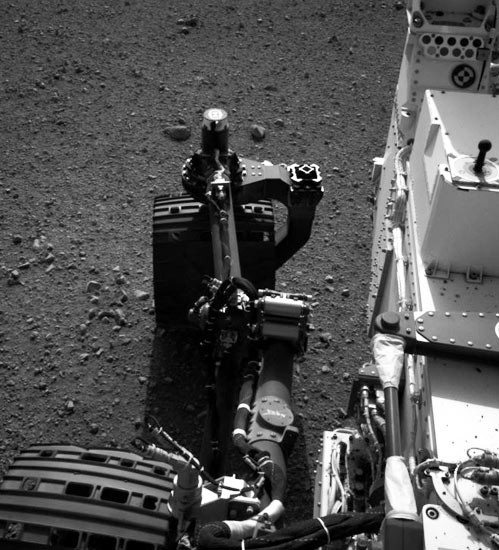Mars Curiosity Rover Wiggles Wheels Before First Test Drive
Nasa Rover will drive several metres from landing site as tests continue before starting on search for life

The Mars Curiosity Rover was ready to set off on its first test drive before exploring part of the red planet.
Engineers at Nasa's jet-propulsion laboratory in Pasadena have tested the Rover's six wheels by turning them in a "wheel wiggle", showing that the vehicle will be able to navigate the difficult terrain.
The Rover will drive off over the billion-year-old rocks of the planets surface as it continues its mission to determine if Mars could harbour life.
The first test drive will be a relatively short journey, so as not to jeopardise the historic project. The Rover will move just three metres forward, turn to its right, reverse and park in a position to the left of its old spot.
"You will definitely see tracks," mission manager Mike Watkins said.
The rover is equi[pped with a 2.1m-long arm, and a number of tools, including a camera, drill, scoop and spectrometer. These will allow it to collect samples of soil and determine the planet's ability to support microbial life.
Since the Rover landed successfully, it has carried out a series of "health checks", culminating in this test drive. Once everything is determined to be operational, it could set off on trips of hundreds on meters each day, beaming images back to Earth.
The rvehicle suffered some damage to its wind sensor upon landing. The damage, which is thought to have occured as the craft touched down in an ancient crater, throwing up pebbles onto the delicate sensor and damaging wires, will not jeopardise the mission, according to the team.
Ashwin Vasavada, deputy project scientist, said that the damaged sensor could lead scientists to work harder when they try to determine wind speed and direction. He added: "I think we can work around that".

Mars Movies: Best Films to Celebrate the Landing of the Mars Curiosity Rover
© Copyright IBTimes 2025. All rights reserved.



















